- Home
- Franklin W. Dixon
A Con Artist in Paris Page 3
A Con Artist in Paris Read online
Page 3
“Galerie Simone?” Joe asked, wide-eyed.
“Oui, you have heard of it?” Plouffe asked, surprised.
“We sure have,” I told him. “That’s where Le Stylo’s new exhibit is.”
6
THE LUCKY LADY
JOE
LE STYLO’S STUNT WAS GOOD for business at Galerie Simone, that’s for sure. It was only two o’clock in the afternoon, but the hip Left Bank gallery was packed. So packed we had to wait in line for half an hour before we reached the ginormous security guard. The guy was so big you couldn’t even see the stool he sat on, and his old-fashioned driving cap was pulled so low you couldn’t see his eyes, either, just ominous shadows. We were about to follow the couple in front of us inside when he snapped the velvet rope closed.
“Um, pardon, monsieur, s’il vous plaît . . .” Frank fumbled in French, but the guard didn’t wait for him to finish.
“If you want to see art you can afford, there’s a comic book store across the street,” he rumbled with an impossibly deep French accent.
“Hey, how do you know what we can afford?” I bluffed. “This gallery is open to the public, and we want to come in.”
The guard growled, and I don’t mean a normal grumpy-person growl like Chief Olaf’s. This one practically made my toes vibrate. The stool groaned under his weight as he began to stand. Luckily, he only made it halfway when someone laughed behind us.
“Oh, come on, Luc,” the man said in perfect English with just a hint of a French accent. He was about half the size of Luc the Ginormo Security Guard, but he was so fit and sharply dressed he looked like he’d stepped right out of GQ magazine. The sparkling high-tech dive watch on his wrist probably cost as much as one of Le Stylo’s paintings.
“Most people in there can’t afford it either, and you know it. Let the young gentlemen in,” the man continued.
Luc growled again, but he did as he was told. I was about to say something to rub it in our friend Luc’s face, but the sound of his knuckles cracking made me think better of it, so I hurried past him instead.
Our rescuer gave us a wink and strode across the room to shake someone’s hand before we had a chance to thank him.
“Remind me to get rich enough to buy a watch like that,” I said to Frank.
“Remind me never to cross paths with Luc again,” he retorted.
“Wow, there’s a ton of people here,” I said, eyeing all the people crowding around Le Stylo’s paintings, pretty much all of them gossiping about the morning’s crime.
Le Stylo’s work wasn’t the only art in the gallery, but it was the only art getting any attention. As we canvassed the place, we walked past a small photography exhibit in the back, documenting the Paris street-art scene. None of the pictures showed Le Stylo’s pieces, but there were lots of less famous street artists like Cosmonaute, and a bunch of pictures featuring Ratatouille’s work too. One really cool photo showed a close-up of Ratatouille in his red beret stenciled over the window of a camera shop, holding a vintage camera to his eye. The way the photographer framed it, it looked like Ratatouille was the one taking the picture of himself in the window.
“Georges St. Denis,” Frank read the photographer’s signature aloud from the bottom of the frame.
The only other people in Georges St. Denis’s exhibit were a group of men and women gathered around a table with a fancy cheese plate. They looked like artists themselves, and from the way they were talking, not everybody at Galerie Simone was impressed with Le Stylo’s work.
A short, mousy-looking guy with bright red hair, paint-splattered sneakers, and a camera around his neck seemed to be the ringleader. I didn’t hear the last thing he’d said, but a tall blond woman in coveralls was nodding vigorously.
“You are correct,” she said with what I think was a Dutch accent. “His technique, meh, it is okay, but there is no depth to it. The message is splashed obviously all over the surface.”
“It is of little surprise he turned to theft. He has been stealing from other artists for years,” the redheaded guy agreed, munching on a piece of cheese.
He looked vaguely familiar, but I couldn’t quite put my finger on it. Like maybe he reminded me of someone famous, but I couldn’t think of who.
“He bought his fame with marketing stunts,” he continued, waving his hand dramatically at the photographs displayed behind him. “Just look at the work of the other artists illustrating the streets of Paris. Cosmonaute, for example, and Ratatouille, who is perhaps the most underrated. These are the true artists of the révolution de l’art de la rue.”
I was tempted to say something in Le Stylo’s defense, but Frank grabbed my arm.
“I bet that’s Simone Lachance.” He nodded across the gallery to a pretty woman with jet-black hair highlighted by a silver streak that fell over one eye. She tucked a strand of hair behind her ear as she showed off one of Le Stylo’s paintings, exposing a glimmering diamond stud. La chance meant “luck” in French, and from Simone’s appearance, she’d had her share.
The fancy French proprietress was in full schmooze mode as many of the gallery’s richest-looking patrons clamored for her attention, gathering around the painting to hear what she had to say.
“Should we eavesdrop?” asked Frank.
“Oui, oui,” I agreed.
We were a few feet away when her cell phone rang and she excused herself. We quickly turned our backs so it looked like we were studying one of the paintings.
“Let’s intercept her on her way back and see if we can get her to answer a few questions,” I suggested.
As soon as she clicked off, Frank moved in. “Bonjour, madame, parlez-vous anglais?”
She looked at him like he was from another planet instead of another country.
“Of course I speak English. My galleries do business all over the world, and my contacts in New York and London are too lazy to learn proper French. Although it’s probably for the best. They just botch it when they try. What do you want? As you can see, we are very busy.”
“Well, um, we’re visiting with our high school and, um, doing a project on the contextualized social activism in Le Stylo’s public art installations . . . for our art history class,” Frank improvised, “and we were at the Louvre where he pulled that stunt this morning. . . .”
“Ach, that.” She grimaced. “What a mess. I’ve had police and journalists harassing me all day. As if I know who he is.”
“But you’re the only art dealer in the world he lets sell his work. How can you not know who he is?” I asked. If anyone had known, I’d figured it was her.
She gave an annoyed wave of her hand. “Unfortunately, the police think the same thing. I wish I did know so I could give him a piece of my mind, but a mysterious assistant who calls himself Mr. Nib arranges everything by e-mail, and the paintings are delivered to me anonymously.”
“Surely you must pay somebody when his paintings sell. There’s got to be a money trail,” Frank prodded.
She gave him a suspicious look. “There’s no money trail to follow, because Le Stylo insists that the proceeds from every sale are sent straight to charity. Mr. Nib tells me where to send the money, and I send it. What kind of school project did you say this was?”
“Why do you think he picked you to represent his work?” Frank ignored her and pressed ahead with the questions. She stepped back like he’d slapped her.
“Ha! Isn’t it obvious? No one else in Paris could have driven the global market and legitimized his work within the art world as I have. He is much smarter than most of these other ‘street artists,’ ” she said with finger quotes, giving a dismissive look toward the photography exhibit at the back of the gallery. “Before this Mr. Nib of his asked me to broker his sales, his masterpieces were considered little more than high-concept vandalism by the cretins with the real money.”
We had Simone Lachance on a roll, and I figured I’d better keep pressing her before she shut the interview down. She seemed like a pretty shre
wd operator, so . . .
“Kind of a strange coincidence that Le Stylo decided to steal the pen you just sold to another one of your clients,” I observed casually, hoping to fluster her into letting her guard down.
“Who are you?” she demanded. “You’re way too young to be police or insurance investigators, but if I did not know better, I’d say this was an interrogation.”
“We’re just staying at the same hotel as Monsieur Plouffe is all,” Frank explained, trying to defuse her. “He was showing off the pen last night and was very distressed this morning after it was stolen.”
“Plouffe.” She said his name like it was a bad odor. “Another cretin. This mess is the last thing I needed. You can be certain I will be telling Mr. Nib exactly what I think about his Le Stylo throwing me under the autobus. I have many other clients and a reputation to protect.”
“You have to admit, the stunt hasn’t been half-bad for business,” I needled, looking around the packed gallery.
“I suppose it hasn’t,” she said, narrowing her eyes at me. “Not that it does me much good. He, or she, or whatever Le Stylo is, makes me donate my normal commissions to charity as well. ‘Social activism.’ Ha! Rather hypocritical in light of recent events, no?”
I frowned. She had me there.
“Why bother selling his work at all if you aren’t getting paid?” Frank asked.
“Normally, representing him is good for business,” she replied. “The art world looks to me to tell them what is worth collecting. It would not have done for another gallery to make Le Stylo a star.”
Simone turned to leave, then stopped and turned back.
“And I wouldn’t feel too terrible for your poor Monsieur Plouffe. He made absolutely sure that pen was insured for considerably more than he paid. I suspect he’ll be earning quite a handsome return on his investment.”
We hadn’t been expecting that. Was there a secret silver lining to the theft of the golden pen that could turn Plouffe’s misfortune into a fortune? Could the bereaved collector possibly be the architect behind his own distress?
Simone Lachance walked off, leaving us alone to consider Plouffe’s plight in front of the largest Le Stylo installation in the gallery. It was an actual eight-foot-tall slice of brick wall torn out of the side of a building. Almost the entire thing was blank except for the top and the bottom. A little girl was stenciled at the bottom, holding an umbrella and looking up at the silhouettes of bomber planes flying across the top. Only instead of bombs, they were dropping Le Stylo’s signature fountain pens. The price tag on the bottom said 400,000 EUROS.
“Do you like it?” a familiar smooth voice with a light French accent asked from behind us. “I just bought it.”
My mouth dropped open as I looked from the ginormo painting’s ginormo price tag to the well-dressed guy who had helped save us from Luc the Ginormo Security Guard.
“I’m afraid our ill-mannered friend at the door didn’t take the trouble to introduce us.” He extended the hand with the gazillion-dollar dive watch. “My name is Cyril Brune.”
7
ALTERED EGOS
FRANK
I STARED UP AT CYRIL Brune, the rich Daredevil philanthropist . . . and one of the men rumored to secretly go by the alter ego Le Stylo.
“Um, Frank,” I said, shaking his hand.
“And Joe,” my brother added.
“Hardy,” we said together.
He focused on the installation in front of us, biting his lip as he stared at it.
“Well, Frank and Joe Hardy, what do you think?” he asked again. He looked at us like he was genuinely interested in our opinion, but I think we were both still too shocked by the price tag to formulate a response.
“Oh, don’t worry, I didn’t pay face value for it,” he said when he saw us gawking. “I paid one hundred fifty thousand euros more.”
“Okay, math might not be my best subject,” Joe said, trying to process what Cyril Brune had just told us, “but . . . what?!”
“And, um . . . why?!” I added.
Cyril laughed. “Why not? I can afford it, and it all goes to charity anyway. Driving up the price of Le Stylo’s work simply means the rich fools like me who are willing to pay for it are forced to give more to people who need it.”
“Wow, Mr. Brune, that’s really cool of you,” I said, my brain still spinning, trying to wrap itself around what it must be like to have so much money you could pretty much just give away fortunes on a whim.
“Oh, just plain Cyril is fine. The art world puts on enough airs,” he said, returning his gaze to the brick wall. “To be honest, I’m not even sure how much I like this one. Le Stylo does tend to recycle his own imagery, and the only thing that makes this one special is that it still remains on a part of the original wall.”
“No offense, Cyril, but if you don’t like it, why did you pay five hundred fifty thousand euros for it?” Joe asked.
“Oh, I didn’t say I didn’t like it. I said I wasn’t sure. This may sound funny coming from a well-known art collector, but I’ve never been very confident when it comes to judging art,” he confessed sadly. “What I am sure I like is Le Stylo’s business model, if you can call giving away money a business model, that is. Le Stylo’s got guts, and he puts his money where his brush is. Paying a premium for his work simply gives me a chance to pay the message forward.”
“That’s really admirable of you, Cyril,” I said.
Cyril shrugged off the compliment humbly (or at least as humbly as someone in a few-thousand-dollar sport coat can shrug) and then leaned in with a devilish little grin. “Besides, it rankles my friend Simone to know how much additional commission she isn’t earning.”
“You know,” Joe said tentatively, “some people think you’re the one putting his money where his brush is.”
Cyril smiled.
“Oh, those ridiculous rumors that I’m Le Stylo? I wish!” He looked around the gallery wistfully. “Sadly, I’m not much of an artist myself, and I have a letter from the dean of my art college asking me not to return to prove it, so I do my best to support those who are. I haven’t picked up a paintbrush since I flunked out; now I pick up my wallet instead. I may not have been lucky enough to be gifted with talent, but I was gifted a huge inheritance. May as well put it to good use, no?”
He was about to add something else when he looked up at the door and his face sagged. “Not again.”
Following his gaze, we saw a small mob of reporters and TV cameras through the window, trying to push their way inside past Luc.
“They’ve been chasing after me ever since the news broke about that awful Louvre prank this morning. I have to admit, those stupid rumors about me being Le Stylo were a little more fun before this whole disaster. Now they’re just going to paint Le Stylo as a villain.”
“After what he did this morning, he kind of is the villain,” I said.
“And a thief, from the looks of it,” Joe mumbled, giving a disappointed kick at the floor.
“Maybe. Maybe not,” Cyril said matter-of-factly, casting another glance at the window, where the TV cameras were jostling for position to get shots of him. “Darn. They’ve spotted me. No sneaking by them now.”
Cyril’s frown suddenly turned upside down as he looked at us. “Would you boys mind doing me a huge favor?”
“Um, I don’t know what kind of favor we could possibly do for you, Cyril, but sure,” I said.
“I’m going to step back to the restroom for a minute,” he said. “If you boys could tell those newshounds out front that you saw Cyril Brune slip out the back door, I’d certainly appreciate it.”
“Sure,” Joe agreed, “but why not just go ahead and actually slip out the back door on your own first?”
“Because there isn’t one,” he said with a grin. “But by the time they realize that, I’ll have already slipped out the front.”
“No problem,” both Joe and I agreed at once. That was our kind of plan.
He gave us a bi
g warm smile. “Tell you what, I’m having a little get-together at my place tonight. I’d be honored if you stopped by.”
Joe and I looked at each other. We weren’t about to turn down that offer.
“Fantastic. It’s settled, then. Where are you staying?”
“Grand Hotel du Louvre,” I told him.
“Lovely. I’ll send a car around this evening.” And with that he strode toward the back of the gallery.
His plan worked perfectly. Luc gave us a confused glance when we told the mob of reporters Cyril had slipped out the back, but he didn’t say anything.
• • •
We got back to the hotel a few hours later to find the IPAD detectives buzzing with gossip. Turns out there had been a new development in the case since we’d left the gallery: packages containing super-valuable original Le Stylo paintings had mysteriously started appearing on the doorsteps of charities all over Paris with signed cards reading: LE STYLO IS NOT A THIEF.
Chief Olaf was a lot more willing to give us the inside scoop after our run-in with Chief Inspector Devereux that morning. He was still bristling over Devereux’s insult, and just the mention of the inspector’s name was enough to make him turn red.
“The Paris police have tails on a few suspects, and word is it couldn’t have been Cyril Brune who delivered the paintings,” he clued us in. “They’ve had eyes on him all day. He went to that gallery where they’re showing Le Stylo’s work earlier this afternoon and has been on his houseboat since. The packages were delivered after he got home.”
“Houseboat?” I asked. I’d been about to tell Chief Olaf that we’d had a chance meeting of our own with Cyril at the gallery, but the mention of a houseboat totally got me sidetracked.
“He’s got a place outside Paris too, but apparently that’s where he stays when he’s in the city,” the chief explained. “Got it docked on the Seine under the Pont Alexandre III not far from here. Everybody says it’s a real beaut.”
A few other detectives joined in the conversation, and they were all trading rumors about Cyril when Inspector Devereux strode through the lobby like he owned the place. He sniffed in our direction as he walked past on the way to the manager’s office, and I could see Chief Olaf clench his hands into fists. Even his fingers were turning red.

 The Great Pumpkin Smash
The Great Pumpkin Smash Who Let the Frogs Out?
Who Let the Frogs Out? Return to Black Bear Mountain
Return to Black Bear Mountain A Treacherous Tide
A Treacherous Tide Bug-Napped
Bug-Napped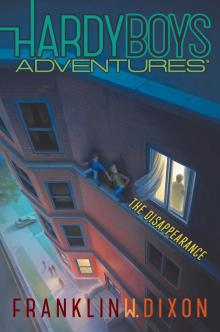 The Disappearance
The Disappearance Sea Life Secrets
Sea Life Secrets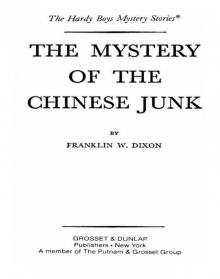 The Mystery of the Chinese Junk
The Mystery of the Chinese Junk A Skateboard Cat-astrophe
A Skateboard Cat-astrophe Too Many Traitors
Too Many Traitors Galaxy X
Galaxy X The Secret Panel
The Secret Panel The Secret of Wildcat Swamp
The Secret of Wildcat Swamp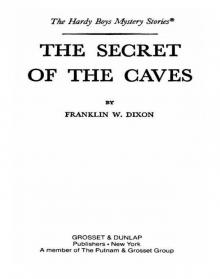 The Secret of the Caves
The Secret of the Caves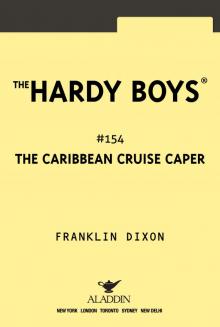 The Caribbean Cruise Caper
The Caribbean Cruise Caper Without a Trace
Without a Trace The Mystery of the Spiral Bridge
The Mystery of the Spiral Bridge Movie Menace
Movie Menace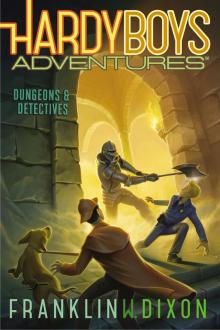 Dungeons & Detectives
Dungeons & Detectives Water-Ski Wipeout
Water-Ski Wipeout The Case of the Psychic's Vision
The Case of the Psychic's Vision X-plosion
X-plosion Deathgame
Deathgame The Apeman's Secret
The Apeman's Secret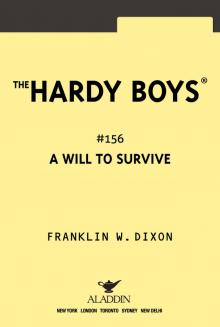 A Will to Survive
A Will to Survive Mystery at Devil's Paw
Mystery at Devil's Paw Blood Money
Blood Money The Mark on the Door
The Mark on the Door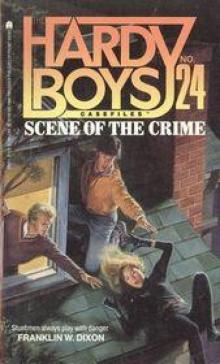 Scene of the Crime
Scene of the Crime The Gray Hunter's Revenge
The Gray Hunter's Revenge Stolen Identity
Stolen Identity The Mummy's Curse
The Mummy's Curse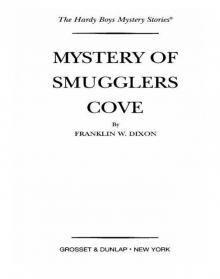 Mystery of Smugglers Cove
Mystery of Smugglers Cove Diplomatic Deceit
Diplomatic Deceit The Haunted Fort
The Haunted Fort The Crisscross Shadow
The Crisscross Shadow Secret of the Red Arrow
Secret of the Red Arrow Trial and Terror
Trial and Terror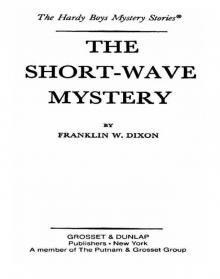 The Short-Wave Mystery
The Short-Wave Mystery The Spy That Never Lies
The Spy That Never Lies Operation: Survival
Operation: Survival Deception on the Set
Deception on the Set The Sign of the Crooked Arrow
The Sign of the Crooked Arrow Hunting for Hidden Gold
Hunting for Hidden Gold Disaster for Hire
Disaster for Hire The Clue in the Embers
The Clue in the Embers Danger Zone
Danger Zone The Hidden Harbor Mystery
The Hidden Harbor Mystery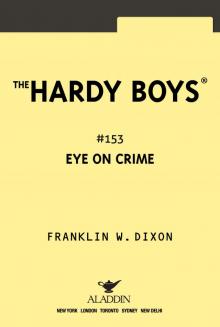 Eye on Crime
Eye on Crime A Game Called Chaos
A Game Called Chaos The Bicycle Thief
The Bicycle Thief The Missing Playbook
The Missing Playbook Survival Run
Survival Run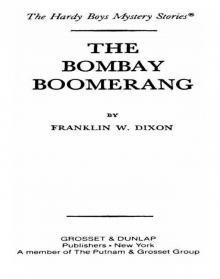 The Bombay Boomerang
The Bombay Boomerang Mystery of the Samurai Sword
Mystery of the Samurai Sword Burned
Burned Death and Diamonds
Death and Diamonds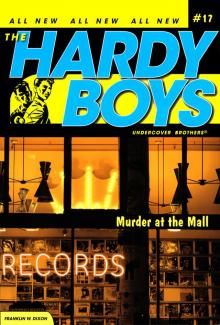 Murder at the Mall
Murder at the Mall The Prime-Time Crime
The Prime-Time Crime Hide-and-Sneak
Hide-and-Sneak Training for Trouble
Training for Trouble Trouble in Paradise
Trouble in Paradise While the Clock Ticked
While the Clock Ticked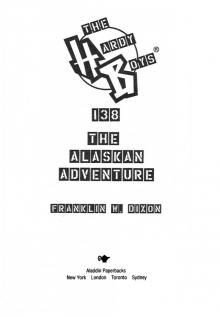 The Alaskan Adventure
The Alaskan Adventure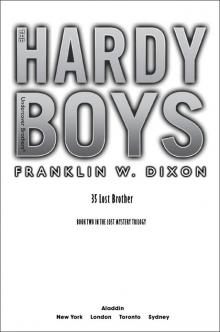 The Lost Brother
The Lost Brother Tunnel of Secrets
Tunnel of Secrets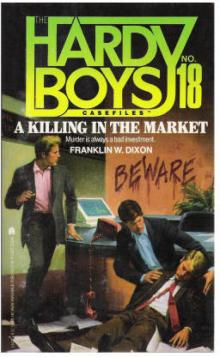 A Killing in the Market
A Killing in the Market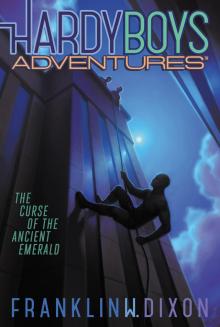 The Curse of the Ancient Emerald
The Curse of the Ancient Emerald The Arctic Patrol Mystery
The Arctic Patrol Mystery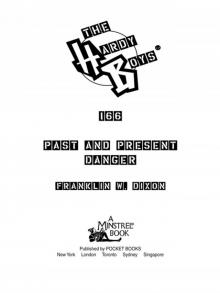 Past and Present Danger
Past and Present Danger The Castle Conundrum (Hardy Boys)
The Castle Conundrum (Hardy Boys) Farming Fear
Farming Fear Nowhere to Run
Nowhere to Run The Secret of the Soldier's Gold
The Secret of the Soldier's Gold Danger on Vampire Trail
Danger on Vampire Trail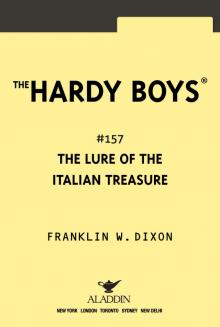 The Lure of the Italian Treasure
The Lure of the Italian Treasure The Mystery of Cabin Island
The Mystery of Cabin Island Darkness Falls
Darkness Falls Night of the Werewolf
Night of the Werewolf Danger in the Extreme
Danger in the Extreme The Lazarus Plot
The Lazarus Plot The Hooded Hawk Mystery
The Hooded Hawk Mystery Double Trouble
Double Trouble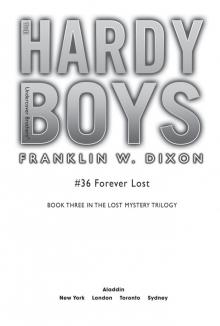 Forever Lost
Forever Lost Pushed
Pushed The Great Airport Mystery
The Great Airport Mystery The Hunt for Four Brothers
The Hunt for Four Brothers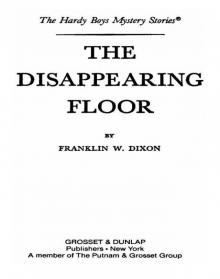 The Disappearing Floor
The Disappearing Floor Motocross Madness
Motocross Madness Foul Play
Foul Play High-Speed Showdown
High-Speed Showdown The Mummy Case
The Mummy Case The Firebird Rocket
The Firebird Rocket Trouble in Warp Space
Trouble in Warp Space Ship of Secrets
Ship of Secrets Line of Fire
Line of Fire The Clue of the Broken Blade
The Clue of the Broken Blade Medieval Upheaval
Medieval Upheaval Witness to Murder
Witness to Murder The Giant Rat of Sumatra
The Giant Rat of Sumatra Attack of the Bayport Beast
Attack of the Bayport Beast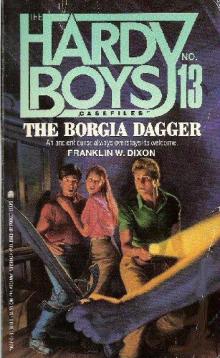 The Borgia Dagger
The Borgia Dagger Scavenger Hunt Heist
Scavenger Hunt Heist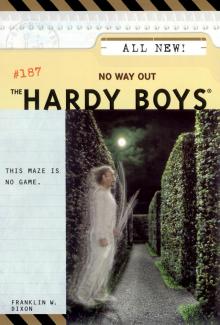 No Way Out
No Way Out Murder House
Murder House The X-Factor
The X-Factor The Desert Thieves
The Desert Thieves Mystery of the Phantom Heist
Mystery of the Phantom Heist The Battle of Bayport
The Battle of Bayport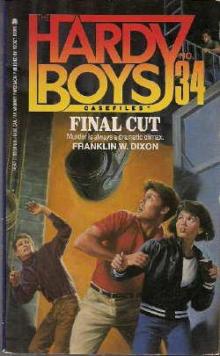 Final Cut
Final Cut Brother Against Brother
Brother Against Brother Private Killer
Private Killer The Mystery of the Black Rhino
The Mystery of the Black Rhino Feeding Frenzy
Feeding Frenzy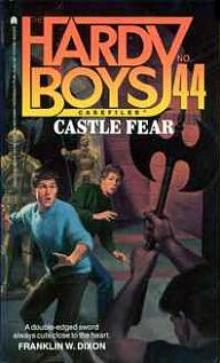 Castle Fear
Castle Fear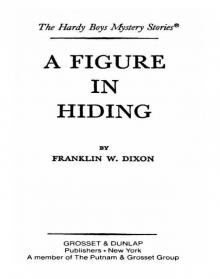 A Figure in Hiding
A Figure in Hiding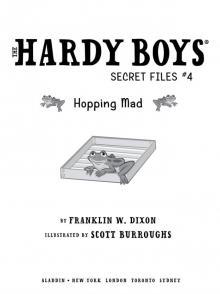 Hopping Mad
Hopping Mad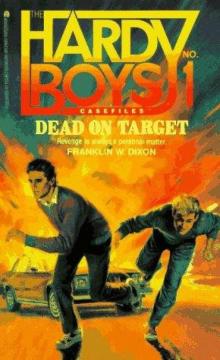 Dead on Target
Dead on Target Skin and Bones
Skin and Bones The Secret Warning
The Secret Warning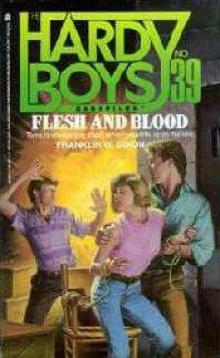 Flesh and Blood
Flesh and Blood The Shattered Helmet
The Shattered Helmet Boardwalk Bust
Boardwalk Bust Terror at High Tide
Terror at High Tide In Plane Sight
In Plane Sight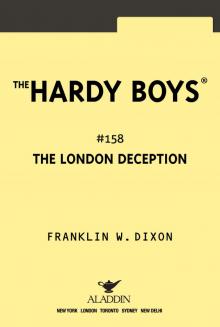 The London Deception
The London Deception Evil, Inc.
Evil, Inc. Deprivation House
Deprivation House The Mystery of the Aztec Warrior
The Mystery of the Aztec Warrior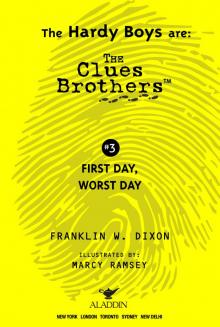 First Day, Worst Day
First Day, Worst Day Bonfire Masquerade
Bonfire Masquerade Killer Connections
Killer Connections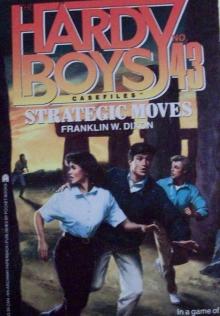 Strategic Moves
Strategic Moves Warehouse Rumble
Warehouse Rumble The Chase for the Mystery Twister
The Chase for the Mystery Twister The Tower Treasure thb-1
The Tower Treasure thb-1 The Children of the Lost
The Children of the Lost The Last Laugh
The Last Laugh Trick-or-Trouble
Trick-or-Trouble Perfect Getaway
Perfect Getaway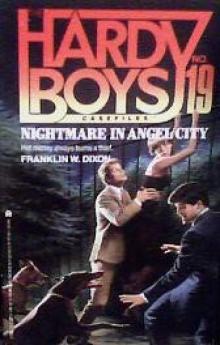 Nightmare in Angel City
Nightmare in Angel City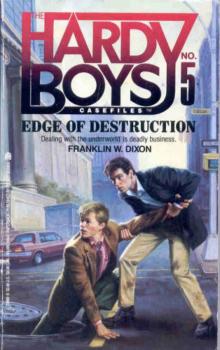 Edge of Destruction
Edge of Destruction Fright Wave
Fright Wave The Jungle Pyramid
The Jungle Pyramid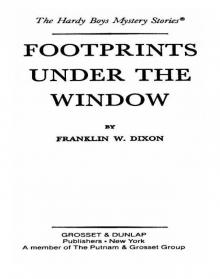 Footprints Under the Window
Footprints Under the Window The Gross Ghost Mystery
The Gross Ghost Mystery A Monster of a Mystery
A Monster of a Mystery House Arrest
House Arrest Mystery of the Desert Giant
Mystery of the Desert Giant Talent Show Tricks
Talent Show Tricks The Sting of the Scorpion
The Sting of the Scorpion The Secret of Skull Mountain
The Secret of Skull Mountain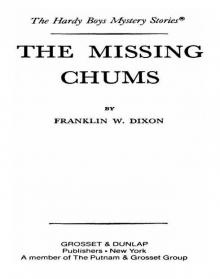 The Missing Chums
The Missing Chums Kickoff to Danger
Kickoff to Danger Cult of Crime
Cult of Crime Running on Fumes
Running on Fumes Martial Law
Martial Law The Pentagon Spy
The Pentagon Spy Hazed
Hazed The Secret Agent on Flight 101
The Secret Agent on Flight 101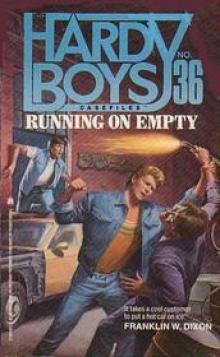 Running on Empty
Running on Empty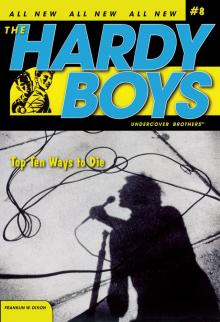 Top Ten Ways to Die
Top Ten Ways to Die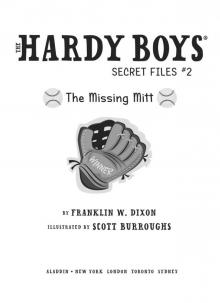 The Missing Mitt
The Missing Mitt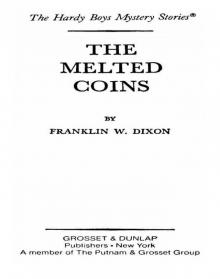 The Melted Coins
The Melted Coins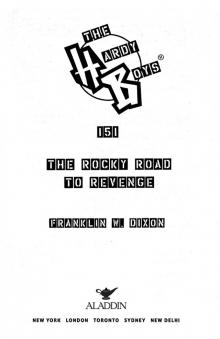 The Rocky Road to Revenge
The Rocky Road to Revenge The Masked Monkey
The Masked Monkey Lost in Gator Swamp
Lost in Gator Swamp Extreme Danger
Extreme Danger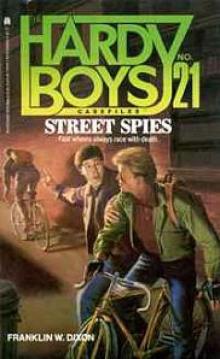 Street Spies
Street Spies The Wailing Siren Mystery
The Wailing Siren Mystery The Dangerous Transmission
The Dangerous Transmission Hurricane Joe
Hurricane Joe The Crisscross Crime
The Crisscross Crime Mystery of the Whale Tattoo
Mystery of the Whale Tattoo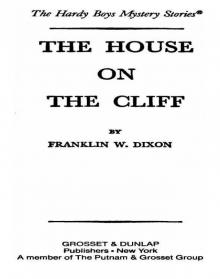 The House on the Cliff
The House on the Cliff Camping Chaos
Camping Chaos Ghost of a Chance
Ghost of a Chance Tagged for Terror
Tagged for Terror Thrill Ride
Thrill Ride Fossil Frenzy
Fossil Frenzy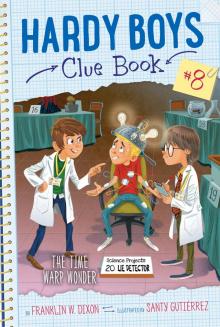 The Time Warp Wonder
The Time Warp Wonder Ghost Stories
Ghost Stories Speed Times Five
Speed Times Five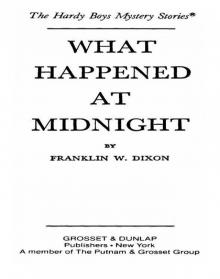 What Happened at Midnight
What Happened at Midnight Three-Ring Terror
Three-Ring Terror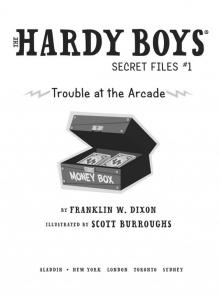 Trouble at the Arcade
Trouble at the Arcade The Clue of the Hissing Serpent
The Clue of the Hissing Serpent Trouble in the Pipeline
Trouble in the Pipeline The Tower Treasure
The Tower Treasure Hostages of Hate
Hostages of Hate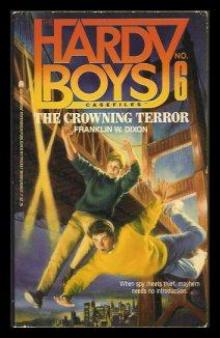 The Crowning Terror
The Crowning Terror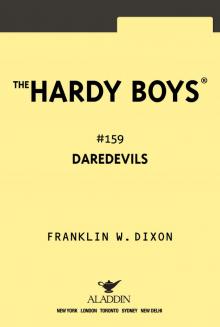 Daredevils
Daredevils The Vanishing Thieves
The Vanishing Thieves Killer Mission
Killer Mission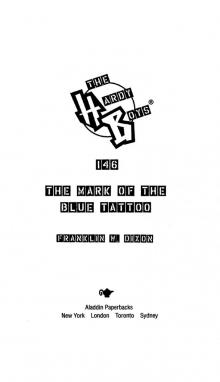 The Mark of the Blue Tattoo
The Mark of the Blue Tattoo The Witchmaster's Key
The Witchmaster's Key The Deadliest Dare
The Deadliest Dare Peril at Granite Peak
Peril at Granite Peak The Secret Of The Old Mill thb-3
The Secret Of The Old Mill thb-3 Rocky Road
Rocky Road The Demolition Mission
The Demolition Mission Blown Away
Blown Away Passport to Danger
Passport to Danger The Shore Road Mystery
The Shore Road Mystery Trouble Times Two
Trouble Times Two The Yellow Feather Mystery
The Yellow Feather Mystery One False Step
One False Step Crime in the Cards
Crime in the Cards Thick as Thieves
Thick as Thieves The Clue of the Screeching Owl
The Clue of the Screeching Owl The Pacific Conspiracy
The Pacific Conspiracy The Genius Thieves
The Genius Thieves The Flickering Torch Mystery
The Flickering Torch Mystery Into Thin Air
Into Thin Air Highway Robbery
Highway Robbery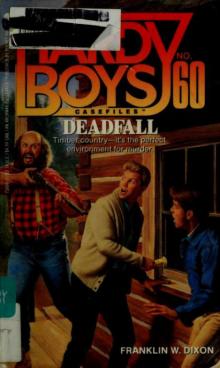 Deadfall
Deadfall Mystery of the Flying Express
Mystery of the Flying Express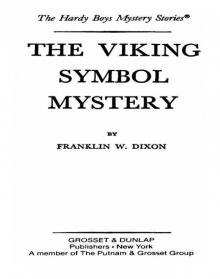 The Viking Symbol Mystery
The Viking Symbol Mystery The End of the Trail
The End of the Trail The Number File
The Number File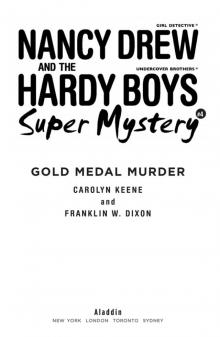 Gold Medal Murder
Gold Medal Murder Bound for Danger
Bound for Danger Collision Course
Collision Course The Madman of Black Bear Mountain
The Madman of Black Bear Mountain The Secret of the Lost Tunnel
The Secret of the Lost Tunnel The Stone Idol
The Stone Idol The Secret of Pirates' Hill
The Secret of Pirates' Hill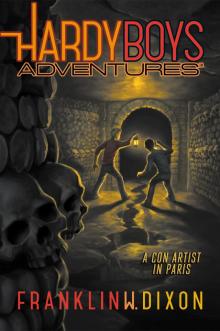 A Con Artist in Paris
A Con Artist in Paris The Mysterious Caravan
The Mysterious Caravan The Secret of Sigma Seven
The Secret of Sigma Seven The Twisted Claw
The Twisted Claw The Phantom Freighter
The Phantom Freighter The Dead Season
The Dead Season The Video Game Bandit
The Video Game Bandit The Vanishing Game
The Vanishing Game Typhoon Island
Typhoon Island